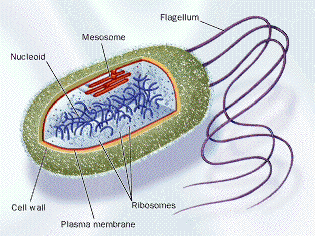How Does A Lowly Member Of The Bacterium World Sense Its Environment?

By Aussiegirl
In my post entitled "Even Single Cells Stick Together" (two posts ago), we learned that, to quote from the article, the simplest of social creatures - single-celled amoebae - have the ability not only to recognize their own family members but also to selectively discriminate in favor of them. In this article we learn how such "lowly" members of the Great Chain of Life, like the idealized bacterium in the illustration, sense their environment and respond to it. Obviously, all life must be aware of its surroundings, and be able to communicate with whatever is nonself, but the intricate details are truly amazing, and engender a sense of awe at Nature's mastery.
How Does A Lowly Member Of The Bacterium World Sense Its Environment
How Does A Lowly Member Of The Bacterium World Sense Its Environment
by Krishna Ramanujan
Ithaca NY (SPX) Jun 06, 2006
When humans taste or smell, receptors unique to each nerve cell detect the chemical and send signals to the brain, where many cells process the message to understand what we are smelling or tasting. But a bacterium is just a single cell, and it must use many different receptors to sense and interpret everything around it.
Bacteria can sense in their environments changes in molecular concentrations as small as 0.1 percent, the equivalent of one drop diluted in a pool of a 1,000 drops. How do they do it? New Cornell research, highlighted on the cover of the May issue of Nature Structural and Molecular Biology, reveals that receptors assemble into a kind of cooperative lattice on a bacterium's surface to amplify infinitesimal changes in the environment and kick off processes that lead to specific responses within the cell.
"Bacteria sense a lot of different things. But assume it's a sugar molecule that a bacterium needs as a nutrient -- even a 0.1 percent change in concentration can be detected, and this sensitivity is maintained over five orders of magnitude in nutrient concentration," said Brian Crane, assistant professor of chemistry and chemical biology and corresponding author of the paper.
"Biologically, I know of no other system that is so sensitive over such a large range." Crane believes the kind of cooperative lattice found in bacterial receptors may in fact point to a general mechanism for cellular signaling and serve as inspiration for developing molecular devices. Such devices could be used to sense a wide range of chemicals, light, ionic strength (salt), pH and heavy metals with great sensitivity, gain and dynamic range.
Scientists are interested in developing synthetic systems with such sensing properties as well as engineering bacteria that respond to stimuli such as pollutants or explosives. Using a combination of X-ray crystallography to determine the structure of receptors and enzymes and a novel spectroscopic technique for measuring interactions between them, Crane's group was able to develop a model for how the complex of receptors is organized.
Jack Freed, Cornell professor of chemistry and chemical biology and director of the National Biomedical Center for Advanced ESR Studies at Cornell, developed the spectroscopic technique, called pulsed electron spin resonance dipolar spectroscopy. The researchers suggest that when one receptor detects, for example, a sugar in its environment, communication of some sort triggers an array of linked receptors to rearrange itself, much like when water freezes, all the water molecules assort themselves into a new structure.
Through this reorganization, the bacterium's receptor array amplifies the signal that a specific molecule has been sensed outside the cell. This structural shift then activates kinases, or enzymes, within the cell, starting a chain reaction that leads to a response, such as changing how the flagella (or tails) spin. This allows the bacterium to move toward or away from what it has sensed.
Such a mechanism of amplification allows signals from the receptors to travel hundreds of angstroms, a distance used in atomic physics that is a virtual marathon in the world of intracellular communication. Ten angstroms equal a nanometer, which is one-billionth of a meter. Sang-Youn Park, a former graduate student in Cornell's Department of Chemistry and Chemical Biology, and senior research associates Peter Borbat and Alexandrine Bilwes were the study's lead authors. The research was funded by the National Institutes of Health.


1 Comments:
Good luck, your life seems interesting!
Peace and Love!
Dominic Ebacher
ebacherdom.blogspot.com
Post a Comment
<< Home